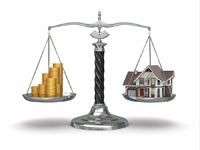What Is Equalized Assessed Value (EAV)?
 The Equalized Assessed Value (EAV) of your property is the product of the assessed value of your property (both land and improvements) and the State Equalization Factor, which is set by the Illinois Department of Revenue.
The Equalized Assessed Value (EAV) of your property is the product of the assessed value of your property (both land and improvements) and the State Equalization Factor, which is set by the Illinois Department of Revenue.
How Is EAV Calculated?
In Illinois, counties are required to “equalize” property tax assessments so that the median level of assessment is at 33% of fair market value. If the average sales price in the overall market is either higher or lower than 33% of assessed values, the prior assessed values will be increased or decreased by a factor that corrects this. Because Cook County assesses residential property at 10% of fair market value, rather than the 33% required by state law, Cook County’s equalization factor can approach 3 while that of other counties are typically closer to 1.0. The equalization factor is then multiplied by your property’s assessed value to determine its EAV.
Cook County EAV Example
The Cook County Assessor’s Office calculates the EAV of your property by taking the market value of your home, multiplying it against the County’s property tax assessment ratio (10%) and then multiplying that against the equalization factor (2.9706 in 2011 for example). The resulting EAV is the taxable value of your property, minus exemptions.
For example, if the market value of your home is $250,000, you multiply that by 10% for an assessed value of 25,000 and then by 2.9706 to get an EAV of $74,265.
Why Is EAV Needed?
EAV is part of an approach to taxation and property assessment which is supposed to ensure fairness to the taxpayers throughout the state of Illinois. EAV is also used in attempting to equitably set and distribute state grants-in-aid and applying tax rate and bonded indebtedness restrictions fairly.




 Over 90% Success Rate on Property Tax Appeals & Protests
Over 90% Success Rate on Property Tax Appeals & Protests No Up-Front Fees
No Up-Front Fees